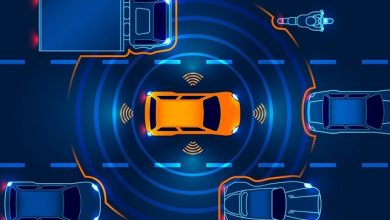Changes to urban infrastructure have accelerated the need for dynamic predictive in-car services

Sustainability measures put in place by municipalities to improve the quality of life for inhabitants living in urban areas are putting automakers under increasing pressure to provide dynamic services that will allow them to continue to provide positive on-street parking experiences for drivers.
According to the United Nations Department of Economic and Social Affairs, densely populated urban areas will be home to more than two-thirds of the world’s population by 2050. However, the transport sector, which generates more greenhouse gas emissions than any other, is currently causing large amounts of air pollution within cities. By removing vehicles from inner-city areas, emissions, noise and congestion are reduced, while air quality, and also the safety of inhabitants is improved.
Global on-street parking inventory is decreasing
Many EU cities are now adhering to strict emissions restrictions by introducing fee payable congestion and Ultra Low Emission Zones (ULEZ) which dissuade motorists from driving into highly populated areas. On-street parking is also gradually being reduced with the aim to encourage drivers to use alternative forms of transportation for the final leg of their journey.
However, finding on-street parking is already a struggle for many drivers. Each year drivers in European and North American cities spend an average of 55 hours searching for on-street parking spaces. Searching for a suitable parking space now accounts for almost one-third of inner-city traffic in Europe, with approximately 1.3 kilograms of CO2 emitted for every search – contributing significantly to the carbon footprint of each journey.
In 2020, Paris announced that it will remove 60,000 of its 140,000 on-street parking spaces to allow for more space for cyclists and pedestrians, and allow for an ‘ecological transformation of the city’, with the aim to improve daily life for Parisians. Since then, an additional 10,000 spaces and amenities for motorists have been removed, key thoroughfares have been made inaccessible to vehicles, and the previous 70,000 parking spaces have been replaced with ‘green’ spaces, vegetable plots and playgrounds. Last year, Paris also announced a 50% increase in parking prices and the introduction of parking charges for motorcycles for the first time, with only electric motorbikes remaining exempt, aiming to encourage riders and drivers to switch to more environmentally friendly forms of transport in the city centre.
Amsterdam’s Green Infrastructure Vision 2050 plan delineates clear goals for a greener future, with the aim of transforming the concrete city into a place where nature can thrive and coexist with the urban landscape, thus improving both the city’s liveability and tackling climate change. The plans to achieve this include the introduction of more urban green spaces, more cycling and walking routes, and more car-free streets. Amsterdam is already one of the most expensive cities in Europe for on-street parking, with an average price of $13.31 for 2-hour parking, and plans to remove more on-street parking spaces in the future.
In London, where on-street parking takes up space equivalent to 10 Hyde Parks (or 14,164,000m2), the city has also implemented tighter parking regulations in densely populated areas, to encourage public transport and ‘active travel’. According to the Centre for London, residents want trees, green spaces, clutter-free pavements and more children’s play areas prioritised over on-street parking or EV charging points, however, neither car ownership, nor the proportion of trips made by public transport, walking or cycling, has changed significantly over the last three years, resulting in greater competition, for fewer spaces.
Recent COVID-19 restrictions also saw a reduction in on-street parking as municipalities promoted central businesses to expand their outside facilities. In 2021, Milan removed a tax related to the overall footprint to enable businesses to expand their outdoor facilities, allowing them to continue to trade under new social distancing restrictions, however, this resulted in the loss of around 3,000 parking spaces which were heavily utilised by visitors and residents.
Further challenges to on-street parking for ICE vehicles are plans to repurpose on-street parking spaces for EV vehicle charging only. A step to reducing emissions, but requiring the installation of a large volume of on-street chargers. Amsterdam is currently installing 1,100 new chargers as part of its aim to achieve ‘emission-free transport’ by 2030, however, critics suggest the scheme has significant financial challenges to provide the volume of chargers without substantial government grants, with on-street charging currently not proving commercially viable.
As well as an overall reduction in the total number of spaces, drivers also now face greater restrictions on those that remain. Maximum stay times are significantly reduced and enforcement has been intensified, encouraging a much higher turn-over per space. Drivers who still wish to park curbside, now risk a much greater chance of receiving a fine if they fall foul of the many changing restrictions now in place.
Associated tariffs are also continuing to rise due to growing demand, with payment zones reduced, in order to efficiently manage these high-demand areas. In some cities, such as New York, dynamic pricing is used, with prices increasing in line with times of peak demand and drivers charged based on the actual perceived value of the space rather than a static arbitrary amount. On-street is traditionally cheaper than off-street parking, however, dynamic pricing allows car park operators to incentivise drivers to use their facilities with prices now significantly lower than those on-street – looking to reduce situations where drivers circle around crowded streets looking for a space, causing additional pollution and congestion.
The more complex on-street parking landscape creates an even bigger need for accurate and granular on-street parking data, which is essential to support drivers by giving them the information required to make well-informed parking decisions as part of their overall journey.
Providing accurate and granular data
As the global leader in digital parking services, Parkopedia’s parking database now covers almost 1.5 million on-street locations worldwide, more than three times that of our nearest competitor, with 1 million locations added within the last 4 years alone.
Over the last 4 years our total completeness has also grown consistently to reach just under 99%. Data completeness refers to the comprehensiveness of the data with no gaps or missing information being present. Inaccurate or incomplete data renders the service unusable to the driver potentially causing detrimental user experiences.
Alongside traffic and weather, parking is the most requested driver information service. Automakers who don’t already prioritise their parking services, have the potential to create lasting negative user experiences for drivers. Static parking information is a valuable tool for drivers. Parkopedia, for example, gathers dozens of static parking data attributes for every location, including the precise location of each on-street parking space, as well as useful information such as hours of operation, any restrictions and parking costs. However, when parking is highly competitive, dynamic services which predict occupancy at a specific location, become essential.
By leveraging parking payment transaction data, and vehicle sensor data Parkopedia provides the highest quality predictions available to drivers, with our dynamic data providing space occupancy information, as well as the “probability to find parking” by individual street segments and for off-street parking facilities.
Our predictions also continue to improve as cutting-edge machine learning and computer vision methods and partnerships help to solve difficult parking problems. By carefully managing the data collection process, Parkopedia has grown its dynamic data coverage availability by more than 600% over the last 4 years.
Geofencing for automated on-street parking payments
Highly granular parking data will be crucial for automated parking payments, with transactions requiring deep vehicle integrations across all available data and sensor inputs for the next-generation user experiences expected.
Currently, parking payment operators rely on charging drivers according to their location due to large zonal areas, similar to a postal or ZIP code. The user will manually pin their location and be charged the corresponding amount for that zone and for the duration of their parking session. However, as driver demand increases for automated payments, this current blanket approach across large areas will not be a viable solution in up to 80% of cases at certain locations. When parking payments become automated, all parked vehicles within these large zones will be sent trigger payments, and drivers could even be charged or fined for parking on their own driveway, for example.
Only Parkopedia is currently able to overcome this issue, as it is the only provider with the necessary technology and granularity of data to create much smaller and more accurate ‘geofences’, enabling automated payment requests or triggers for customers within a specified area only. Our on-street data standard and accuracy allows us to create geofences to as little as a row of 3-4 parking spaces, allowing for GPS to identify it as a paid parking zone, and match the POI location to a payment ID, thus triggering an accurate payment request.
The foundation of what’s to come
The removal of on-street parking in urban areas is a growing issue for automakers who want to provide their drivers with positive parking experiences and ‘peace of mind’ so they can effortlessly complete their journeys. In order to keep up with the dwindling supply of on-street spaces, evolving restrictions and strategic pricing models, automakers require accurate, complete and highly granular parking data that can be updated in real-time for the driver, and support highly automated seamless in-vehicle payments. This combination empowers drivers to make well-informed parking decisions, even when finishing journeys without ‘local knowledge’ at new destinations, and also delivers upon the next generation in-car convenience services that are expected by drivers from today’s vehicles.
Author:

Eugene Tsyrklevich
Founder & CEO
Parkopedia
Eugene launched Parkopedia in 2007 after driving to a conference in San Francisco and struggling to find any useful parking information online. After realising that drivers all over the world must be facing the exact same problem every day, Eugene created Parkopedia with the mission of improving the world by delivering innovative parking solutions.
Published in Telematics Wire





